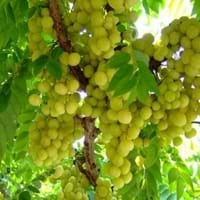Life Span
Annual and Perennial
Perennial
Type
Bulb or Corm or Tuber
Fruit, Tree
Origin
Central America, South America
Not Available
Types
Vine, Flowering plant
Not Available
Number of Varieties
Not Available
Habitat
All sorts of environments, Along Railroads, Banks, Moist Ditches, Roadsides, rocky banks of streams
Forests, gardens, Hill prairies, Homesteads, Rocky areas, Woodlands
USDA Hardiness Zone
10-13
Not Available
AHS Heat Zone
12-1
Not Available
Sunset Zone
21,22
Not Available
Habit
Vining/Climbing
Bushy, Evergreen
Minimum Width
Not Available
Flower Color
Purple, Rose
Light Green, Lime Green
Flower Color Modifier
Bicolor
Not Available
Fruit Color
Not Available
Green, Light Green
Leaf Color in Spring
Purple, Dark Green, Black
Yellow, Green, Gray Green
Leaf Color in Summer
Light Green
Light Green
Leaf Color in Fall
Several shades of Green
Yellow, Green, Gray Green
Leaf Color in Winter
Light Green
Yellow, Green, Gray Green
Leaf Shape
Acicular
Ovate
Plant Season
Spring, Summer, Fall, Winter
Spring, Summer, Fall, Winter
Sunlight
Full Sun, Partial Sun
Full Sun, Partial Sun, Partial shade
Growth Rate
Very Fast
Fast
Type of Soil
Clay, Loam, Sand
Loam, Sand
The pH of Soil
Acidic, Neutral, Alkaline
Acidic, Neutral, Alkaline
Soil Drainage
Well drained
Well drained
Bloom Time
Late Spring, Early Summer, Summer, Late Summer, Early Fall, Fall, Late Fall
Early Summer, Summer, Late Summer, Early Fall
Tolerances
Drought
Pollution, Salt, Soil Compaction
Where to Plant?
Container, Ground
Ground
How to Plant?
Cuttings, Leaf Cutting, Tuber propagation
Seedlings, Stem Cutting, Stem Planting
Plant Maintenance
Medium
Low
Watering Requirements
Keep the Soil well drained, Needs very little water
Keep ground moist, Requires regular watering, Use Mulches to help prevent water loss during hot and windy weather
In Summer
Lots of watering
Lots of watering
In Spring
Moderate
Moderate
In Winter
Average Water
Average Water
Soil pH
Acidic, Neutral, Alkaline
Acidic, Neutral, Alkaline
Soil Type
Clay, Loam, Sand
Loam, Sand
Soil Drainage Capacity
Well drained
Well drained
Sun Exposure
Full Sun, Partial Sun
Full Sun, Partial Sun, Partial shade
Pruning
Remove damaged leaves, Remove dead branches, Remove dead leaves
Cut or pinch the stems, Do not prune during shooting season, Remove deadheads
Fertilizers
All-Purpose Liquid Fertilizer
High Potash Fertilizer
Pests and Diseases
Red blotch
Bacterial Blight, Foliage-feeding caterpillars, Moth
Plant Tolerance
Drought
Pollution, Salt and Soil Compaction
Flower Petal Number
Single
Single
Foliage Texture
Coarse
Fine
Foliage Sheen
Matte
Matte
Attracts
Aphids, Beetles, Cutworms, Insects, Mites, Whiteflies
Caterpillar
Allergy
Abdominal pain, allergic reaction, Nausea, Skin rash, Twitching of face
Skin irritation
Aesthetic Uses
Not Used For Aesthetic Purpose
Not Used For Aesthetic Purpose
Beauty Benefits
Not Available
Blood purifying, Glowing Skin, Good for skin and hair, Provides herbal hair care, Speed hair growth
Environmental Uses
Air purification
Air purification, soil stabilisation
Medicinal Uses
Cures constipation, Fiber, Low calories, lowering blood pressure, Potassium, ß-carotene, Vitamin A, Vitamin C
Atherosclerosis, Cancer, Diabetes, Diarrhea, High blood pressure, High cholestrol, Obesity, Vitamin C
Part of Plant Used
Leaves, Root, Shoots, Stem, Tuber
Fruits
Other Uses
Starch, Used As Food, Used as Ornamental plant
Making Shampoo, Used for its medicinal properties, Used in herbal medicines
Used As Indoor Plant
Sometimes
No
Used As Outdoor Plant
Yes
Yes
Garden Design
Container, Edible, Groundcover, Hanging Basket, Herb / Vegetable, Mixed Border, Rock Garden / Wall, Vine
Cottage garden
Botanical Name
IPOMOEA batatas 'Blackie'
Phyllanthus acidus
Common Name
Blackie Sweet Potato Vine, Sweet Potato Vine
Tahitian gooseberry, country gooseberry, star gooseberry, starberry, grosella
In Hindi
शकरकन्द
ताहितियन आमला
In German
Süßkartoffel
Tahitian Stachelbeere
In French
Patate douce
Tahitian Gooseberry
In Spanish
Ipomoea batatas
Tahitian grosella espinosa
In Greek
Sweet potato
Tahitian Φραγκοστάφυλο
In Portuguese
Batata-doce
Tahitian Gooseberry
In Polish
Wilec ziemniaczany
Tahitian agrest
In Latin
Ipomoea batatas
Tahitian Gooseberry
Phylum
Tracheophyta
Magnoliophyta
Class
Magnoliopsida
Magnoliopsida
Order
Solanales
Malpighiales
Family
Convolvulaceae
Phyllanthaceae
Genus
Ipomoea
Phyllanthus
Clade
Angiosperms, Asterids, Eudicots
Angiosperms, Eudicots, Rosids
Tribe
Not Available
Phyllantheae
Subfamily
Not Available
Not Available
Number of Species
Not Available
Not Available
Season and Care of Sweet Potato Vine and Tahitian Gooseberry
Season and care of Sweet Potato Vine and Tahitian Gooseberry is important to know. While considering everything about Sweet Potato Vine and Tahitian Gooseberry Care, growing season is an essential factor. Sweet Potato Vine season is Spring, Summer, Fall and Winter and Tahitian Gooseberry season is Spring, Summer, Fall and Winter. The type of soil for Sweet Potato Vine is Clay, Loam, Sand and for Tahitian Gooseberry is Loam, Sand while the PH of soil for Sweet Potato Vine is Acidic, Neutral, Alkaline and for Tahitian Gooseberry is Acidic, Neutral, Alkaline.
Sweet Potato Vine and Tahitian Gooseberry Physical Information
Sweet Potato Vine and Tahitian Gooseberry physical information is very important for comparison. Sweet Potato Vine height is 15.00 cm and width Not Available whereas Tahitian Gooseberry height is 800.00 cm and width 400.00 cm. The color specification of Sweet Potato Vine and Tahitian Gooseberry are as follows:
Sweet Potato Vine flower color: Purple and Rose
Sweet Potato Vine leaf color: Purple, Dark Green and Black
Tahitian Gooseberry flower color: Light Green, Lime Green
- Tahitian Gooseberry leaf color: Yellow, Green and Gray Green
Care of Sweet Potato Vine and Tahitian Gooseberry
Care of Sweet Potato Vine and Tahitian Gooseberry include pruning, fertilizers, watering etc. Sweet Potato Vine pruning is done Remove damaged leaves, Remove dead branches and Remove dead leaves and Tahitian Gooseberry pruning is done Cut or pinch the stems, Do not prune during shooting season and Remove deadheads. In summer Sweet Potato Vine needs Lots of watering and in winter, it needs Average Water. Whereas, in summer Tahitian Gooseberry needs Lots of watering and in winter, it needs Average Water.





